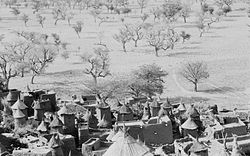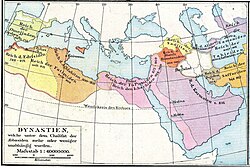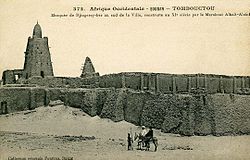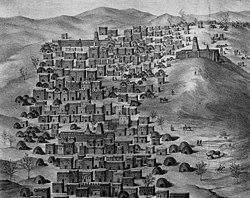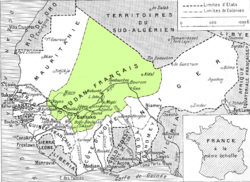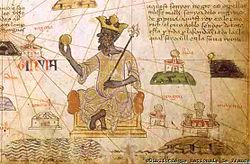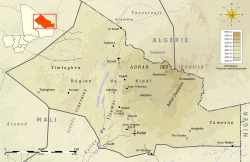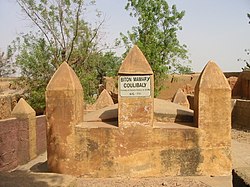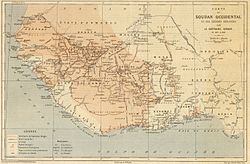The Response of Ahmad al-Bakayi to the Letter of Amir Ahmad, Ruler of Massinah
Autor/Urheber:
Bākī ibn Sayyid Muḥammad ibn Sayyid al-Mukhtār al-Kuntī, Aḥmad
Größe:
3037 x 3750 Pixel (14991368 Bytes)
Beschreibung:
Timbuktu (present-day Tombouctou in Mali), founded around 1100 as a commercial center for trade across the Sahara Desert, was also an important seat of Islamic learning from the 14th century onward. The libraries there contain many important manuscripts, in different styles of Arabic scripts, which were written and copied by Timbuktu’s scribes and scholars. These works constitute the city’s most famous and long-lasting contribution to Islamic and world civilization. This document is a reply to the ruler of Massinah (present-day Macina), Amir Ahmad, who ordered the arrest of the noted German explorer Heinrich Barth (1821–65), who was suspected of spying for the British. There are two copies of the work: a shorter version, and a longer version, which incorporates information not given in the shorter. Shown here is the shorter version. The author of the reply cites Islamic law in arguing that the arrest is illegal and declines to obey the amir. The scholar states that a non-Muslim entering the domain of Muslims in peace is protected and may not be arrested, have his property confiscated, or to be otherwise hindered.
Arabic calligraphy; Arabic manuscripts; Barth, Heinrich, 1821-1865; Islamic law; Islamic manuscripts; Timbuktu manuscripts
Weitere Informationen zur Lizenz des Bildes finden Sie hier. Letzte Aktualisierung: Thu, 29 Feb 2024 03:42:08 GMT
Relevante Bilder
Relevante Artikel
Geschichte Malis
Die Geschichte Malis umfasst die Entwicklungen auf dem Gebiet der Republik Mali und historischer malischer Reiche von der Urgeschichte bis zur Gegenwart. Die vorschriftliche Geschichte Malis reicht derzeit etwa 150.000 Jahre zurück, während schriftliche Quellen erst mit der Islamisierung ab dem 8. bis 11. Jahrhundert einsetzen. Dabei war die Besiedlung vor dem Beginn der produzierenden Lebensweise und auch lange Zeit danach in überaus hohem Maße von der stark schwankenden Ausdehnung der Sahara abhängig. Ab etwa 9500 v. Chr. stellten Jäger und Sammler Keramik her, später wurden Rinder domestiziert und Schafe und Ziegen aus Westasien eingeführt. Um 2000 v. Chr. lebte man im Süden des Landes ganz überwiegend vom Ackerbau, insbesondere von Hirse und anderen Grassamen; nach 800 v. Chr. kam Reis hinzu. Im Binnendelta des Niger entstand aus eigener Wurzel eine Stadtkultur um 300 v. Chr., wobei die Stadt Djenne-Djeno bis zu 33 ha groß wurde, der Dia-Komplex umfasste etwa 100 ha.
.. weiterlesen



